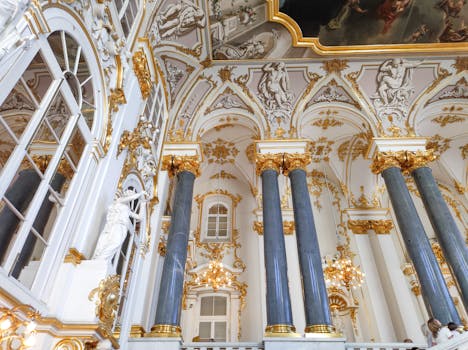
Traveling Through Time: How Europe’s Historical Heritage Shapes Modern Lifestyles in 2025
Traveling Through Time: How Europe’s Historical Heritage Shapes Modern Lifestyles in 2025 Europe, a continent steeped in history and tradition, has always been a hub of cultural and intellectual curiosity. As we journey through the ages, we find that the past continues to shape our present, influencing the way we live, work, and interact with one another. In this article, we’ll delve into the ways in which Europe’s historical heritage shapes modern lifestyles in 2025, from the grand architecture of ancient cities to the subtle nuances of traditional cuisine.
Architecture and Urban Planning
One of the most striking examples of Europe’s historical heritage can be seen in its architecture. From the Colosseum in Rome to the Eiffel Tower in Paris, these iconic landmarks have become synonymous with the continent’s rich cultural heritage. But it’s not just the grand monuments that tell the story of Europe’s past; the very fabric of its cities, with their winding streets, picturesque piazzas, and historic buildings, is a testament to the continent’s enduring legacy. As we navigate the modern cityscapes of 2025, we find that these traditional architectural styles continue to influence contemporary design, with many new buildings incorporating elements of the past into their sleek, modern facades.
Art and Culture
Europe’s historical heritage has also had a profound impact on the art world. From the masterpieces of the Renaissance to the bold experimentation of modernism, the continent has been a hotbed of creative expression for centuries. Today, we see this legacy continued in the vibrant cultural scenes of cities like Berlin, London, and Amsterdam, where artists, musicians, and writers come to draw inspiration from the past. The numerous museums, galleries, and festivals that dot the European landscape are a testament to the enduring power of art to shape our understanding of the world and ourselves. As we look to the future, it’s clear that Europe’s rich cultural heritage will continue to play a major role in shaping modern lifestyles, from the music we listen to the clothes we wear.
Food and Drink
Food and drink have long been an integral part of European culture, with each country boasting its own unique culinary traditions. From the rich pasta dishes of Italy to the hearty beers of Germany, the continent is a gastronomic paradise, with a staggering array of flavors and ingredients to explore. As we travel through Europe in 2025, we find that these traditional cuisines continue to evolve, incorporating modern twists and ingredients while remaining true to their historical roots. Whether it’s a traditional pub lunch in the UK or a Michelin-starred meal in France, the love of good food and drink remains a common thread that binds Europeans together, a shared heritage that transcends borders and languages.
Traditions and Festivals
Finally, no discussion of Europe’s historical heritage would be complete without mentioning the countless traditions and festivals that take place throughout the continent. From the colorful carnivals of Spain and Italy to the solemn remembrance of Armistice Day in the UK, these events are a testament to the enduring power of shared cultural experience. As we look to the future, it’s clear that these traditions will continue to play a vital role in shaping modern lifestyles, providing a sense of continuity and connection to the past in an increasingly fast-paced and globalized world.





